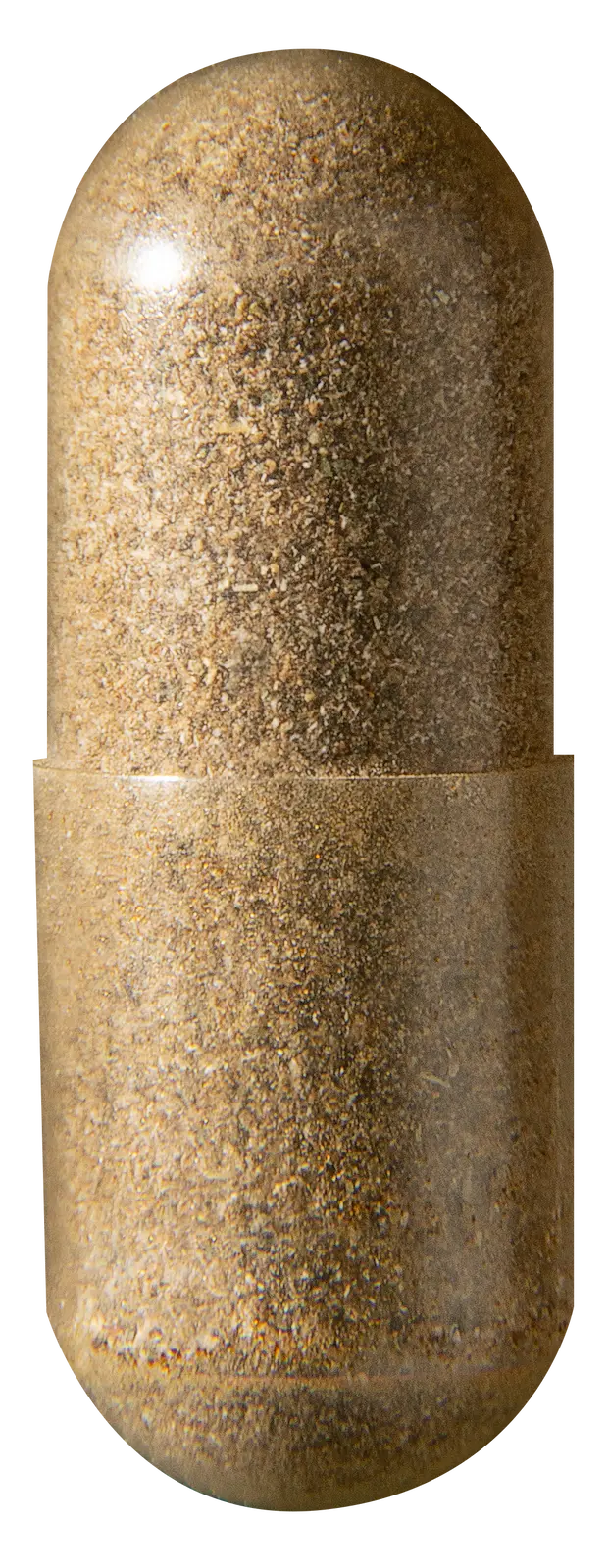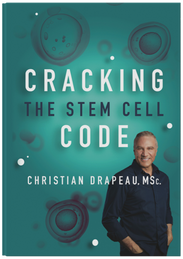Muscle injuries of one kind or another affect virtually every human being, at least one time in their life. For athletes and manual laborers, it is almost a part of daily life. At times, a muscle injury can linger for months, if not years, dramatically affecting one’s quality of life. And given the age-related decline in our ability to repair, understanding how muscle tissues repair and how we can tap into the potential of adult stem cells to support their repair can significantly increase quality of life.
Satellite Cell – a Tissue Specific Muscle Stem Cell
It has been known for quite some time that muscles contain unique kind of cells called satellite cells, that play an important role in muscle repair. This cell was later determined to be a type of tissue-specific stem cell that becomes activated when a muscle is injured.[1],[2] And yet, in spite of the presence of satellite cells in muscles, muscle and ligament repair is oftentimes less than optimal and a muscle injury can remain present and reduce quality of life for months to years.
Bone Marrow Stem Cells for Muscle Repair
In the early days of stem cell research, scientists reported that stem cells from the bone marrow have the ability to transform into muscle cells and to participate in the process of muscle repair.[3],[4] Furthermore, using animal models of muscle injuries, studies documented how stem cells are naturally released from the bone marrow after a muscle injury, how they travel to the injured muscle where they migrate into the muscle and how, upon contact with damaged muscle tissue, they contribute to repair.[5],[6] These studies highlighted the extent to which stem cells naturally play an important role in the repair of muscle tissue.
Can Endogenous Stem Cell Mobilization Help Repair Muscle?
Scientists documented how an injection of bone marrow stem cells directly into an injured muscle can enhance the repair of muscle tissue.[7] However, given the fact that bone marrow stem cells naturally contribute to muscle repair,[8] further investigation was warranted to determine whether simply triggering the release of stem cells from the bone marrow could enhance the recovery of an injured muscle. Using the pharmaceutical stem cell mobilizer Granulocyte Colony-Stimulating Factor (G-CSF), scientists demonstrated that Endogenous Stem Cell Mobilization (ESCM) could indeed enhance and accelerate muscle repair.[9] It was found that ESCM enhances muscle recovery via the conversion of stem cells into muscle cells, but also by stimulating satellite cells already present in the muscle.[10] The outcome not only verified enhanced muscle repair but also demonstrated increased muscle strength.
Similar results have been documented using the natural stem cell mobilizer Aphanizomenon flos-aquae (AFA). An extract of AFA was shown to significantly enhance muscle regeneration after severe muscle damage.[11]
What This Could Mean for Degenerative Muscle Diseases
While no actual treatment is in sight, it is interesting to mention that a number of stem cell-based approaches have been documented to improve symptoms of muscular dystrophy. For example, dental pulp stem cells injected into the bloodstream were reported to engraft within affected muscles and to improve symptoms of muscular dystrophy.[12] Injection of stem cells isolated from muscle tissue directly into the artery feeding the affected muscle also led to regeneration of the muscle.[13],[14] Similar results were obtained in humans with the injection of muscle-derived stem cells directly into the affected muscles.[15]
Promising results have also been seen with ESCM. Using G-CSF, stimulating the release on bone marrow stem cells was reported to support muscle regeneration in an animal model of muscular dystrophy, and to improve muscular function in a model of amyotrophic lateral sclerosis (ALS).[16],[17]
Endogenous Stem Cell Mobilization and Athletic Performance
It is interesting to note that intense exercise alone leads to an increase in the number of circulating stem cells. For example, the number of circulating stem cells increases significantly after a marathon.[18],[19],[20] It is believed to be the microscopic muscle tissue damage linked to the intense physical activity that triggers the secretion of G-CSF and the consequent release of stem cells from the bone marrow.[21] Exercise also promotes the conversion of stem cells into Endothelial Progenitor Cells destined to build new capillaries into damaged muscle tissue.[22]
Therefore, it is a natural response of the body to release stem cells after intense physical activity in order to assist in the repair of microscopic muscle injuries. With this in mind, it is likely that supporting the release of stem cells from the bone marrow with the daily use of a natural herbal stem cell mobilizer could enhance muscle repair in athletes and increase athletic performance over time. Though no studies have been done to document such increase in physical performances, this is supported by many empirical reports from novice and professional athletes alike.
Sources:
-
The skeletal muscle satellite cell: still young and fascinating at 50.
Yablonka-Reuveni Z. J Histochem Cytochem. 2011. -
Stem cell activation in skeletal muscle regeneration.
Fu X, Wang H, Hu P.Cell Mol Life Sci. 2015 May;72(9):1663-77. -
Muscle regeneration by bone marrow-derived myogenic progenitors.
Ferrari G, Cusella-De Angelis G, Coletta M, Paolucci E, Stornaiuolo A, Cossu G, Mavilio F.Science. 1998 Mar 6;279(5356):1528-30. -
Skeletal muscle differentiation potential of human adult bone marrow cells.
Bossolasco P, Corti S, Strazzer S, Borsotti C, Del Bo R, Fortunato F, Salani S, Quirici N, Bertolini F, Gobbi A, Deliliers GL, Pietro Comi G, Soligo D.Exp Cell Res. 2004 Apr 15;295(1):66-78. -
Robust conversion of marrow cells to skeletal muscle with formation of marrow-derived muscle cell colonies: a multifactorial process.
Abedi M, Greer DA, Colvin GA, Demers DA, Dooner MS, Harpel JA, Weier HU, Lambert JF, Quesenberry PJ.Exp Hematol. 2004 May;32(5):426-34. -
Induction of bone marrow-derived cells myogenic identity by their interactions with the satellite cell niche.
Kowalski K, Dos Santos M, Maire P, Ciemerych MA, Brzoska E.Stem Cell Res Ther. 2018 Sep 27;9(1):258. -
Skeletal muscle differentiation potential of human adult bone marrow cells.
Bossolasco P, Corti S, Strazzer S, Borsotti C, Del Bo R, Fortunato F, Salani S, Quirici N, Bertolini F, Gobbi A, Deliliers GL, Pietro Comi G, Soligo D.Exp Cell Res. 2004 Apr 15;295(1):66-78. -
Muscle regeneration by bone marrow-derived myogenic progenitors.
Ferrari G, Cusella-De Angelis G, Coletta M, Paolucci E, Stornaiuolo A, Cossu G, Mavilio F.Science. 1998 Mar 6;279(5356):1528-30. -
Administration of granulocyte colony-stimulating factor facilitates the regenerative process of injured mice skeletal muscle via the activation of Akt/GSK3alphabeta signals.
Naito T, Goto K, Morioka S, Matsuba Y, Akema T, Sugiura T, Ohira Y, Beppu M, Yoshioka T.Eur J Appl Physiol. 2009 Mar;105(4):643-51. -
Granulocyte-colony stimulating factor enhances muscle proliferation and strength following skeletal muscle injury in rats.
Stratos I, Rotter R, Eipel C, Mittlmeier T, Vollmar B.J Appl Physiol (1985). 2007 Nov;103(5):1857-63. -
Mobilization of bone marrow stem cells with StemEnhance improves muscle regeneration in cardiotoxin-induced muscle injury.
Drapeau C, Antarr D, Ma H, Yang Z, Tang L, Hoffman RM, Schaeffer DJ.Cell Cycle. 2010 May;9(9):1819-23. -
Early transplantation of human immature dental pulp stem cells from baby teeth to golden retriever muscular dystrophy (GRMD) dogs: Local or systemic?
Kerkis I, Ambrosio CE, Kerkis A, Martins DS, Zucconi E, Fonseca SA, Cabral RM, Maranduba CM, Gaiad TP, Morini AC, Vieira NM, Brolio MP, Sant’Anna OA, Miglino MA, Zatz M.J Transl Med. 2008 Jul 3;6:35. -
Intraarterial injection of muscle-derived CD34(+)Sca-1(+) stem cells restores dystrophin in mdx mice.
Torrente Y, Tremblay JP, Pisati F, Belicchi M, Rossi B, Sironi M, Fortunato F, El Fahime M, D’Angelo MG, Caron NJ, Constantin G, Paulin D, Scarlato G, Bresolin N.J Cell Biol. 2001 Jan 22;152(2):335-48. -
Identification of a putative pathway for the muscle homing of stem cells in a muscular dystrophy model.
Torrente Y, Camirand G, Pisati F, Belicchi M, Rossi B, Colombo F, El Fahime M, Caron NJ, Issekutz AC, Constantin G, Tremblay JP, Bresolin N.J Cell Biol. 2003 Aug 4;162(3):511-20. -
Autologous transplantation of muscle-derived CD133+ stem cells in Duchenne muscle patients.
Torrente Y, Belicchi M, Marchesi C, D’Antona G, Cogiamanian F, Pisati F, Gavina M, Giordano R, Tonlorenzi R, Fagiolari G, Lamperti C, Porretti L, Lopa R, Sampaolesi M, Vicentini L, Grimoldi N, Tiberio F, Songa V, Baratta P, Prelle A, Forzenigo L, Guglieri M, Pansarasa O, Rinaldi C, Mouly V, Butler-Browne GS, Comi GP, Biondetti P, Moggio M, Gaini SM, Stocchetti N, Priori A, D’Angelo MG, Turconi A, Bottinelli R, Cossu G, Rebulla P, Bresolin N.Cell Transplant. 2007;16(6):563-77. -
G-CSF supports long-term muscle regeneration in mouse models of muscular dystrophy.
Hayashiji N, Yuasa S, Miyagoe-Suzuki Y, Hara M, Ito N, Hashimoto H, Kusumoto D, Seki T, Tohyama S, Kodaira M, Kunitomi A, Kashimura S, Takei M, Saito Y, Okata S, Egashira T, Endo J, Sasaoka T, Takeda S, Fukuda K.Nat Commun. 2015 Apr 13;6:6745. -
Granulocyte Colony-Stimulating Factor Ameliorates Skeletal Muscle Dysfunction in Amyotrophic Lateral Sclerosis Mice and Improves Proliferation of SOD1-G93A Myoblasts in vitro.
Rando A, Gasco S, de la Torre M, García-Redondo A, Zaragoza P, Toivonen JM, Osta R.Neurodegener Dis. 2017;17(1):1-13. -
Circulating hematopoietic progenitor cells in runners.
Bonsignore MR, Morici G, Santoro A, Pagano M, Cascio L, Bonanno A, Abate P, Mirabella F, Profita M, Insalaco G, Gioia M, Vignola AM, Majolino I, Testa U, Hogg JC.J Appl Physiol (1985). 2002 Nov;93(5):1691-7. -
The effect of brief exercise on circulating CD34+ stem cells in early and late pubertal boys.
Zaldivar F, Eliakim A, Radom-Aizik S, Leu SY, Cooper DM.Pediatr Res. 2007 Apr;61(4):491-5. -
Haematopoietic stem cells and endothelial progenitor cells in healthy men: effect of aging and training.
Thijssen DH, Vos JB, Verseyden C, van Zonneveld AJ, Smits P, Sweep FC, Hopman MT, de Boer HC.Aging Cell. 2006 Dec;5(6):495-503. -
Progenitor cell mobilization after exercise is related to systemic levels of G-CSF and muscle damage.
Krüger K, Pilat C, Schild M, Lindner N, Frech T, Muders K, Mooren FC.Scand J Med Sci Sports. 2015 Jun;25(3):e283-91. -
A maximal exercise bout increases the number of circulating CD34+/KDR+ endothelial progenitor cells in healthy subjects. Relation with lipid profile.
Van Craenenbroeck EM, Vrints CJ, Haine SE, Vermeulen K, Goovaerts I, Van Tendeloo VF, Hoymans VY, Conraads VM.J Appl Physiol (1985). 2008 Apr;104(4):1006-13.





